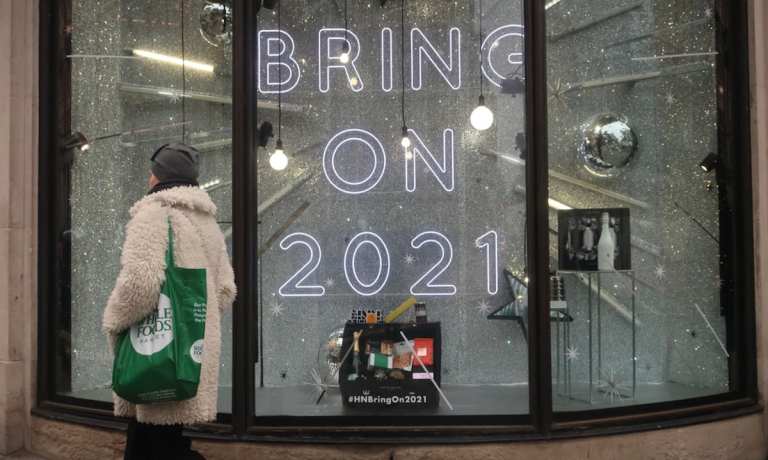
The U.S. economy should see a “meaningful economy recovery” in 2021 as vaccines battle the pandemic and fresh government stimulus kicks in, according to Chief Economist Jack Kleinhenz of the National Retail Federation (NRF). However, he doesn’t expect U.S. economic growth to return to pre-pandemic levels until late 2021, while the jobless rate might remain elevated until as late as 2023.
“The pace of the economic recovery is expected to pick up after the winter months and into mid-year, and it is likely that we will see a reacceleration of gross domestic product and jobs leaning into a meaningful economic recovery,” Kleinhenz wrote in the NRF’s January economic review.
“In such a scenario, consumer spending may grow rapidly,” he wrote. “Nonetheless, we don’t expect economic activity to return to pre-pandemic levels until late 2021, and employment at those levels won’t return until well into 2022 and possibly 2023.”
Kleinhenz told PYMNTS in an interview on Thursday (Jan. 7) that he expects the U.S. jobless rate to drop to the 5 percent to 5.9 percent range in 2021. That’s not as good as the 51-year low of 3.5 percent seen last February before the pandemic hit, but far better than the post-Depression high of 14.7 percent seen in April. It would also represent a drop from December’s 6.7 percent rate.
“If it’s under 6 percent by end of the year, I’d be very satisfied,” Kleinhenz said.
The economist, who will release his official 2021 forecast in February, also said the U.S. economy could grow a decent 4 percent this year. However, he’s basing that estimate on unemployment and holiday spending figures coming in as expected, and COVID-19 vaccines going into wide distribution by mid-year.
If all of that happens, “I predict that by spring or maybe the second quarter, the pace of the economic recovery will have picked up,” Kleinhenz said.
He even thinks the U.S. jobless rate could fall to about 4.5 percent in 2022, but added that “the virus is really dictating the pace of our recovery.”
Kleinhenz added that the rebound will also partly depend on what U.S. consumers do with federal government aid that Congress recently approved, like fresh $600 stimulus checks for most Americans and $300 in extra weekly jobless benefits.
He noted that “there is really no guarantee that consumers will rush out and spend.” In fact, many Americans banked their previous $1,200 stimulus payouts last spring – good news for individual finances, but not something that stimulates the economy as much as spending the money would have.
In fact, the NRF has called on Congress to pass unspecified additional stimulus funding this year, saying that it hopes the latest payouts only represent “a down payment on further economic relief in 2021” that could help retailers.
The group noted that the retail industry employs 52 million Americans, and Kleinhenz said that the stimulus can create “a virtuous cycle” for the sector. Economic aid can increase retail spending, preserving jobs and providing income for retail workers who then create even more spending.
Steve Lamar, president and CEO of the American Apparel and Footwear Association, echoed such sentiment on Thursday (Jan. 7).
“We’re still in the middle of this very tragic, this very terrible pandemic,” Lamar told CNBC. “Until we are able to move out of this, the stimulus is going to need to be something that provides liquidity support for companies … for workers, for consumers, so they can get out and shop and buy products.”